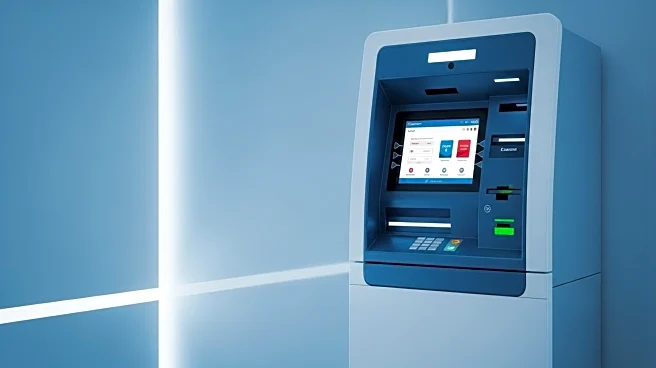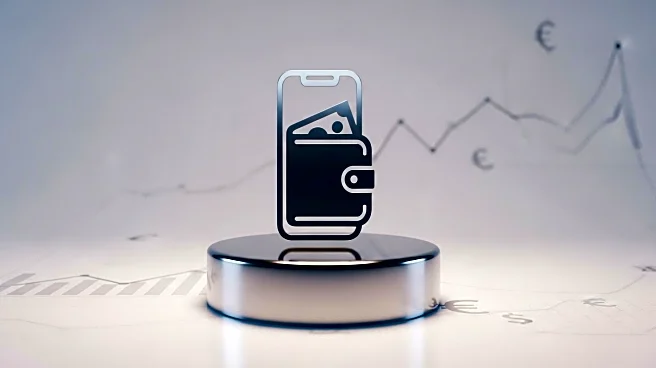What is the story about?
What's Happening?
The State Bank of Pakistan (SBP) has announced plans to increase the number of cash deposit machines (CDMs) in bank branches across the country to promote digitization and self-service banking. The central bank has instructed all commercial banks to develop plans to ensure that CDMs are installed in at least 25% of their branches by 2028. This initiative aims to facilitate customer transactions, enhance security, and improve transparency in banking operations. As of March 2025, only 13 banks had installed 863 CDMs and Cash and Cheque Deposit Machines (CCDMs) at selected branches. The SBP has directed banks to meet operational requirements, including instant credit of funds, customer dispute resolution mechanisms, and proper safety measures for CDM vestibules.
Why It's Important?
The expansion of CDMs is a significant step towards modernizing Pakistan's banking sector, making it more accessible and efficient for customers. By increasing the availability of self-service banking options, the SBP aims to reduce reliance on traditional banking methods and encourage digital transactions. This move is expected to benefit both customers and banks by providing round-the-clock banking solutions and reducing operational costs. The initiative also aligns with global trends towards digital banking, potentially increasing financial inclusion and economic growth in Pakistan.
What's Next?
Banks are required to submit their plans for CDM expansion to the SBP's Payment Systems Policy and Oversight Department by November 30, 2025. They must also ensure compliance with operational requirements, including biometric verification for transactions and dispute resolution within three working days. The installation of CCTV cameras for monitoring CDM activities is also mandated. These steps are expected to enhance customer trust and security in digital banking services.
Beyond the Headlines
The push for increased CDMs may also have broader implications for Pakistan's financial landscape, potentially leading to greater adoption of digital payment systems and reducing cash dependency. This could pave the way for more innovative financial products and services, fostering a more competitive banking environment.
AI Generated Content
Do you find this article useful?
















